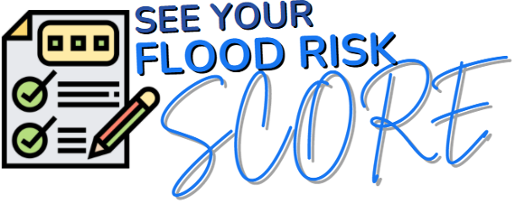Connecticut Flood Insurance: New Haven NFIP Risk Rating 2.0 Update
August 7th, 2021
5 min read
By Chris Greene

The hurricane season is showing more of its damage everywhere in the country and how it can contribute to escalating flood damage for property owners. Today, let's talk about the upcoming changes to federal flood insurance for residents of the small city with a big heart, Milford, New Haven, Connecticut.
We've already talked about the overall changes to federal flood insurance rates and premiums for the state of Connecticut in our previous blog, so today we want to give more specifics to get why and how these changes came to be.

Connecticut had been through a rough patch recently due to tropical storm Elsa. All that rain caused flooding that took two weeks for some homeowners to bounce back from. A lot of people also didn't expect the amount of water that flooded them and damaged buildings. This instance is one of the proof that understanding the risk of flooding in your property is very crucial especially in a time where hurricane activity can bring devastating damages due to floods, strong winds, and sometimes even tornadoes.
A lot of participating communities will be seeing massive changes to rates for the good and the bad when it comes to rates, and these changes will be taking effect from none other than the Federal Emergency Management Agency (FEMA) and the new Risk Rating 2.0.
Risk Rating 2.0
This is what FEMA calls equity in action when it comes to making the cost of flood insurance policies fairer per policyholder. This simply means that when it comes to flood insurance rates, a lot of things will start to change with the National Flood Insurance Program (NFIP) and FEMA. Generally, this is because property values for each individual property will be accounted for when finalizing your quote and flood insurance premiums with the National Flood Insurance Program (NFIP).
It's important to note, however, that this won't mean that the cheapest flood insurance will go automatically to lower-valued homes. It's equally important that we take into account, just like FEMA does and the private flood insurance industry, what's called flood risk variables which includes, but is not limited to the following:
- Designation in the flood map. What flood zone are you in?
- History of flood incidents, flood damage, and flood loss
- Type of floods that the property receives
- Flood claims made with the property
- Flood hazard, flood plain devolvement, and impact of flooding
- First-floor height and elevation
- Mitigation efforts made on the property. Is the lowest floor above the base flood elevation? Are there enough flood openings to let floodwaters through?
Now that we've covered the NFIP and the Risk Rating 2.0, let's talk about its impact on Milford City, Connecticut. We'll cover the good, the bad, and the ugly changes coming to the residents of the city.

The Good
Let's start by covering this update with the good stuff coming with the Risk Rating 2.0. These are good changes as generally, this means that homeowners get to protect their homes and properties through a decreased flood insurance rate from FEMA and the NFIP.
In total, 3,244 or 35.4% of the FEMA policies for Milford homeowners. They will get this immediate decrease in flood insurance rates once the Risk Rating 2.0 kicks in. It's important to note that 1,674 or 18.2% of the policies in force will be getting a decrease that ranges from $0 to $50 (up to $600 per year) and about 1,570 or 17.1% of the policies will be getting a decrease ranging from $50 to more than $100 ($600 - >$1200 per year).
This type of change can really help a lot of these people get protected from the damages of flood, specifically coastal flooding where even the largest building is also a part of the flood-prone homes. Considering that Connecticut also has the second most expensive rates and premiums on the national average, this type of decrease can make the national flood insurance more affordable for more people.
The Bad
Now that we've covered the good things, we have to move into more changes that many people won't like. Starting with the bad change which represents a slight increase in flood insurance rates for policyholders of the NFIP.
This bad change will impact the largest chunk out of Milford since about 4,476 or 48.8% will be getting the increase. This means that flood insurance rates will go up from $0 to $10 per month ($0 - $120 per year).
Now we've already mentioned that the state is already the second most expensive flood insurance in the United States and if you're talking about getting that premium to more than $1500, a lot of homeowners might find it hard to get flood insurance. We'd like to remind everyone however that this isn't the end and you can still go through the private market.
The Ugly
Now, let's move into the ugly changes. We divided this change into three different parts which we call the ugly, the uglier, and the ugliest. Let's talk about them.
First, the ugly change will still be about an increase in rates with FEMA when it comes to flood insurance, but we turn the notch up a bit. This will impact about 685 or 7.5% of the homeowners with an NFIP policy and you'll start to see that the increase will now range from $10 to $20 per month ($120 to $240 per year).
Next, the uglier change will impact 668 or 7.3% of the policies in Milford. The increase we're talking about will start at more than $10 up to $50 per month ($120 -$600 per year). As you can notice, we're starting to see a higher increase as we move further down the line which brings us to the ugliest change.
Lastly, the ugliest change will impact 102 or 1.1% of the policies in the city. This time around the increase in rates will be more drastic since we're talking about more than a hundred homeowners that will get an increase of $50 to more than $100 per month ($600 - >$1200 per year).
Regardless of what FEMA and the NFIP pull on your flood risk or what we call the fingerprint of your flood risk when you're impacted by this change you can expect to face more than $1500 premium and some can even go to $3000 premium.

The National Flood Insurance Program
The National Flood Insurance Program (NFIP) is the answer of the federal government when it comes to flood concerns. This program was established ever since 1968 through the National Flood Insurance Act of 1968. The NFIP is currently working as the federal or government agencies' flood insurance for the United States and its residents. FEMA and NFIP always look into analyzing and studying floodplain devolvement, flood model management, flood insurance, and disaster assistance. So, what does the NFIP cover?
First, it's important to keep in mind that flood insurance is a separate policy from your usual homeowner's insurance and auto insurance policies. This means that if your house gets inundated during a flood event, it won't be the homeowner's policy that will give you flood coverage.
Now that we got that out of the way, the National Flood Insurance Program (NFIP) provides coverages for the flood damage that your property will sustain. The property will involve both the dwelling or the building itself — either residential property or commercial — as well as the contents or the personal property that's inside the insured home. NFIP flood insurance will provide coverage for the dwelling that maxes to $250,000 and contents that maxes to $100,000. There's also additional coverage that comes in when you're a participating community in the National Flood Insurance Program (NFIP) which can be enjoyed through the Community Rating System (CRS) and the Increased Cost of Compliance (ICC).
When Will It Happen?
The Risk Rating 2.0 from the National Flood Insurance Program (NFIP) will take effect starting this October 1st, 2021. It's important to note however that you really don't need to immediately adopt these new rates once Fall comes. The NFIP will allow you to adopt these new rates on your renewal, so if you just renewed your policy with FEMA last April then you can move into the new rates in April 2022.
At the end of the day, we're still subject to extreme weather events, and our friends in coastal areas are more prone to the dangers of these disasters. It's best to know where to get a policy best because we've seen that even without floods, a lot of people still drown due to these expensive insurance premiums.
If you have questions on your flood insurance options in Connecticut, your flood risk score, or anything about flood, reach out to us by clicking below. Remember, we have an educational background in flood mitigation which lets us help you understand flood risks, your flood insurance, and mitigating your property long-term.


